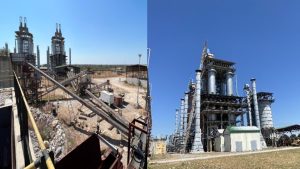The hum of machinery has always been the soundtrack of industry, yet beneath that familiar drone lies a subtler symphony of data points, silent signals and predictive pulses that few investors are tuned into. As factories, warehouses and energy networks evolve, the most compelling stories are no longer written in quarterly returns but in streams of machine metrics that whisper hints of untapped efficiency and hidden risk.
An array of miniature sensors is transforming once-dumb equipment into conscious collaborators. Bearings and belts that once failed without warning now feed live telemetry to cloud-based engines, where algorithms discern the tremors that presage wear and tear. For the astute investor, this shift from calendar-driven maintenance to condition-based servicing represents more than uptime gains: it redefines capital allocation by smoothing cash flow, trimming emergency repairs and extending asset lifespans. It is here, in the subtle deferral of a breakdown, that the first return on investment materialises.
Meanwhile, production lines are shedding their rigid choreography in favour of dynamic, data-driven flexibility. Robots, conveyors and assembly stations converse with central platforms in real time, adapting batch sizes and rerouting workflows to meet bespoke orders without manual recalibration. Such a capability underpins an agile response to market oscillations, reducing scrap rates and waste volumes while preserving throughput. For long-term positioning, the ability to pivot swiftly around shifting consumer demands becomes a competitive moat, anchoring returns in the face of economic ebbs and flows.
Further along the chain, the logistics backbone is illuminated by continuous tracking of goods in transit. Temperature and humidity readers guard sensitive pharmaceuticals against spoilage, while geolocation devices flag delays before they escalate into cost-draining bottlenecks. Reducing inventory buffers and optimising delivery routes not only liberates working capital but also mitigates regulatory headaches, particularly in sectors where compliance lapses can trigger expensive recalls or fines.
Energy accounts, too, are subject to relentless scrutiny. Granular meters embedded in motors, compressors and HVAC systems feed dashboards that highlight anomalous consumption patterns. Automated controls can then dial down non-essential loads during peak tariff windows, or shift processes to renewable sources at low-cost intervals. The financial case for digital energy management is compelling: a multi-million-pound factory can slice its utility bill by double-digit percentages, freeing resources for further innovation or shareholder distributions.
Investments with geographically dispersed assets, whether offshore platforms, mining sites or remote substations, are enjoying a renaissance of oversight through remote asset monitoring. Data streamed from isolated installations enables engineers to diagnose issues from the head office rather than dispatch crews at great expense. Not only are safety incidents reduced, but capex budgets are optimised by focusing site visits where they are truly needed. That precision reduces both direct expenses and the intangible costs of operational downtime.
Quality assurance has long been a battleground for manual inspection versus machine oversight. Vision systems guided by artificial intelligence now detect surface blemishes and assembly flaws in milliseconds, rerouting suspect items before they advance further down the line. By embedding quality control into the flow of production, shrinkage rates shrink, warranty claims dwindle and brand reputation remains untarnished—an essential consideration for companies aiming to preserve pricing power over the long term.
In parallel, intricate virtual replicas of equipment and entire production cells, known as digital twins, grant executives the luxury of experimentation without real-world risk. Scenarios from altered layout configurations to stress-testing under extreme loads can be modelled in silico, revealing the most efficient pathways before capital is committed. This capacity to pre-validate investments underpins a more disciplined approach to expansion, one attuned to both potential reward and foreseeable hazard.
The human element has not been overlooked. Wearable devices monitor environmental hazards and biometric signals, alerting supervisors when noise levels or fatigue thresholds are breached. Such platforms not only bolster workforce wellbeing but also help companies avoid the financial and reputational fallout of safety incidents, factors that resonate deeply with investors attuned to environmental, social and governance criteria.
Finally, the stewardship of our shared environment is increasingly governed by continuous emissions monitoring and compliance reporting powered by industrial IoT. Real-time detection of volatile compounds, particulate matter and effluent parameters ensures that factories remain within regulatory bounds and can demonstrate tangible progress towards sustainability targets. As carbon pricing and environmental disclosure demands intensify, the companies that have already woven IIoT into their compliance fabric will find themselves at a strategic advantage.
From predictive repair to digital replicas, from adaptive production lines to transparent supply chains, the industrial internet of things is quietly reshaping the calculus of investment in heavy industry. It embeds data at every juncture, unlocking insights that drive efficiency, manage risk and reveal opportunities long before they appear on traditional balance sheets.
Industrial IoT harnesses networks of sensors, connectivity and analytics to oversee and optimise operations in manufacturing, energy and logistics, turning every machine and process into a source of real-time intelligence for companies and their investors.
Tern plc (LON:TERN) backs exciting, high growth IoT innovators in Europe. They provide support and create a genuinely collaborative environment for talented, well-motivated teams.











































